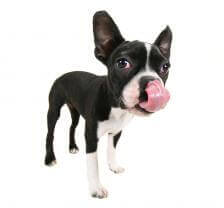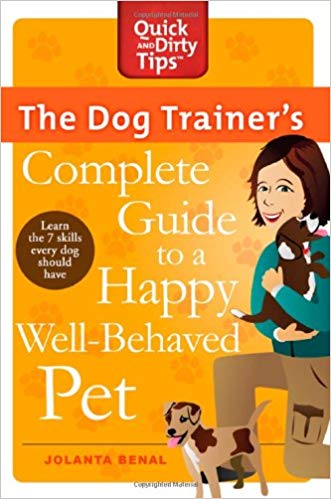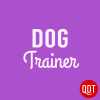Puppy Chewing
SYS! Save your shoes by training your puppy to chew the right things.

Buy Now

Preventing your puppy from nipping people warrants its own podcast, and I’ll talk about that subject in a future episode. But for today I’ll be explaining how to keep your puppy busy and content without sacrificing everything you own.
How to Get Your Puppy to Stop Chewing
Make sure your puppy has appropriate outlets to satisfy her need to chew. Dogs have individual preferences in chew toys. Many, maybe most, love the hollow rubber shapes that can be stuffed with food (these toys are also excellent for preventing food theft once your dog gets older). The brand you’re likeliest to see is Kong. If your puppy’s easily discouraged, start with a mixture of half canned and half dry food. Succeeding at easy chewing jobs will help her learn to stay on task. As she gets better and better at excavating, you can up the ante. For maximum chewing time, wedge biscuits into the bottom of the toy, pack it with food, and then freeze it overnight.
Use some of your puppy’s food for this kind of training and use stuffed toys to satiate the rest of your puppy’s desire to chew. By using this combination of training, you’ll meet his daily needs for chewing and mental exercise. This training is also great for bad-weather busywork to keep an energetic puppy from climbing the walls.
Some toys aren’t made for excavation; instead, you fill them with dry food. The dog shakes, pushes, or tosses
the toy to get the bits of kibble out. That can be enough to satisfy a puppy who’s not one of the world’s champion chewers.
Stay away from cooked bones, because many of them will splinter. Pet suppliers offer sterilized shank bones and marrow bones, but hard weight-bearing bones like these can break an eager chewer’s teeth. If you give your puppy a rawhide chew, supervise her closely, because pieces of the rawhide may break off and choke her.
Get Your Puppy to Stop Chewing by Denying Access
The second step in protecting your household goods is to prevent access to them. Stash your puppy in a safe place —a puppy playpen, or her crate –when you can’t supervise her. And by “supervise,” I mean “give her your undivided attention.” As an alternative to the crate or playpen, you can tether your puppy. But when she’s tethered, don’t leave her alone.
Your puppy’s crate, pen, or tethering spot should be a pleasant space. Include a chew toy, a comfortable bed, and a source of water. Remember, puppies need a lot of rest. If your little friend gets enough exercise, training, and affection, and has had a recent toilet break, he’s likely to spend most of the crate or playpen time sound asleep.
Clients usually ask me about taste deterrents, such as hot sauce or Bitter Apple. Taste deterrents make a poor first line of defense because many puppies and dogs don’t mind them a bit. Besides, the time you spend coating every tempting surface is time you could have spent playing with your puppy. Save the deterrents for electrical cords and other dangers that you can’t simply move out of the way.
Keep your puppy from discovering the chewability of art books, Manolos, and iPods. Steer him to to a legal chew-toy habit, and he’ll be well on his way to model-roommate-hood.


